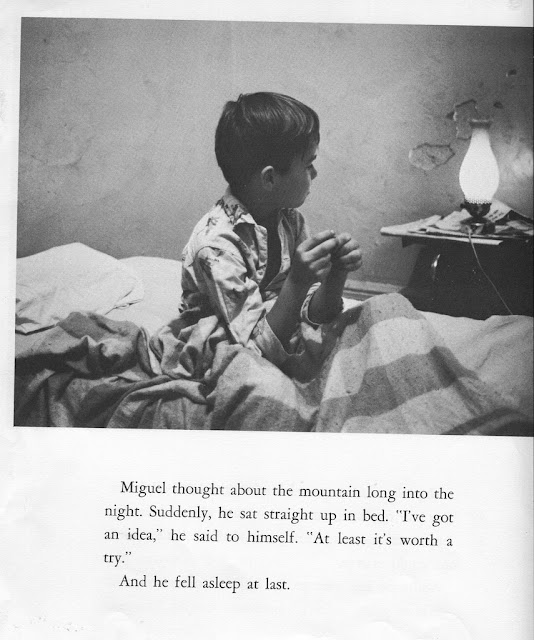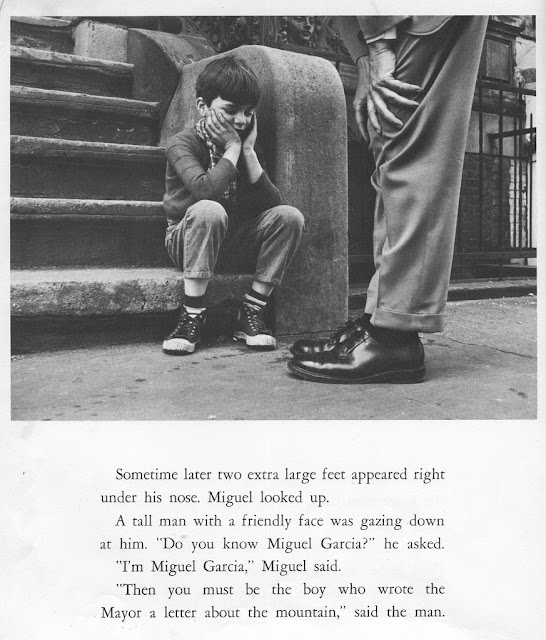In 1993 artist Stephen T. Johnson published an acclaimed book called "Alphabet City" where each letter of the alphabet was represented by some object in the real world. Turns out back in 1971 an artist/graphic designer named Barry S. Miller published an even cooler book pioneering the same idea. Miller even photographed a police/security barrier for his A, which is also what Johnson used. Both images appear on the cover each book! I don't have a copy of Alphabet City, but I wonder if there is any other duplication. I really like the fonts and design of the Miller book.
The best part about this book are the overlays made from translucent vellum paper that help the reader see the letter in the photographic image. The vellum was ripped on the first page of our copy, but that kind of shows the effect:
Here is the overlay and the underlying page side by side:
The only colors are yellow, orange, and red.










































































